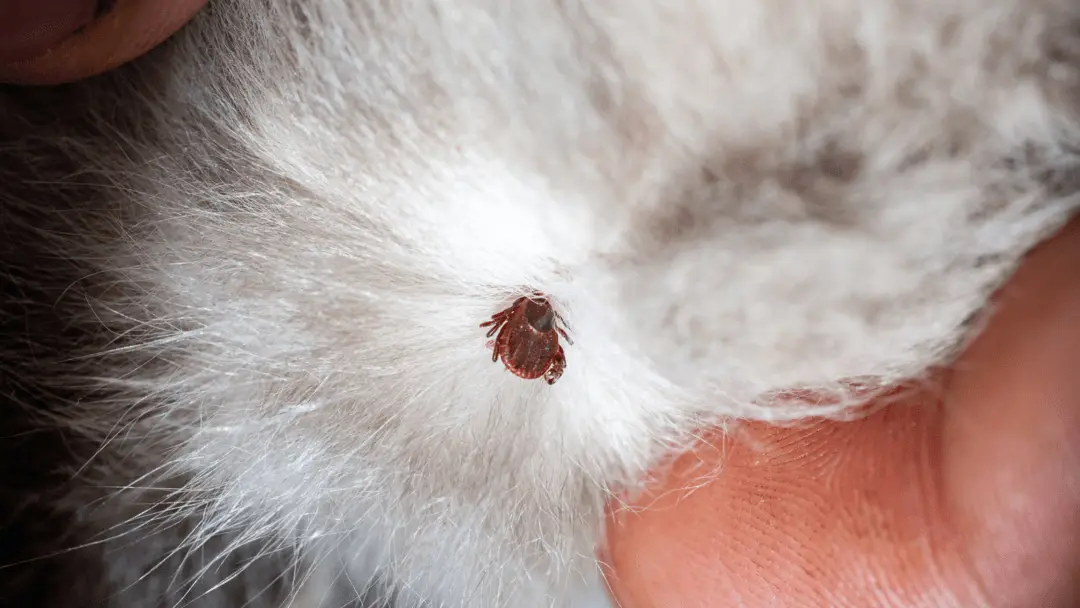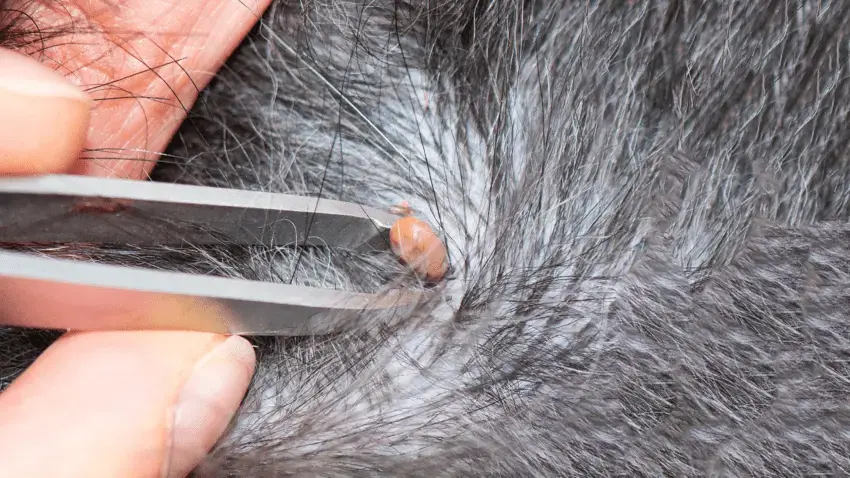How To Remove A Tick From A Cat Safely
Ticks are blood-suckers that can harbor on your cat’s coat. It can cause a slew of skin and coat problems, even health complications, if left unaddressed. Take note that even domesticated kitties can contract ticks at least once in its life. This is why you should know how to remove a tick from a cat before it reproduces and become a massive infestation. Using a tweezer or tick remover, the process is pretty simple.
Ticks vs. fleas
Many pet owners use the term ‘fleas’ and ‘ticks’ interchangeably even though these are two different species. Fleas are wingless and have six legs that it uses to jump from host to host. However, ticks belong to the arachnid family, which means it has eight legs and is cousins of spiders.

Unlike fleas, ticks prefer latching onto the host instead of infesting the house. You have to remove the tick from a cat or other hosts to eradicate its population in your home.
Still, fleas and ticks have similarities, too. Both are blood-suckers that can cause skin and coat problems. Above all, both fleas and ticks carry diseases that can put your cat’s life at risk. For example, ticks can be carriers of the deadly Lyme disease and Rocky Mountain fever that can be lethal for humans.
Where do cats get ticks?

Since ticks are small insects (about 2 mm), it can be difficult to spot unless it’s already plump after sucking blood on your pet. The question is this: how can my cat catch ticks? The following are the possible culprits:
- An infected cat. It’s possible that your pet has been in contact with an infected cat. The tick can latch on your kitty, who will then bring it home. If you have multiple cats at home, it can cause an outbreak.
- Infected outdoor spaces. Suppose you bring your cat to parks and other public areas, its chances of contracting ticks increases. Ticks can stick to branches and blades of grasses, waiting for a host. Also, ticks can harbor and reproduce on the ground.
- Your clothes. Ticks are sneaky creatures, and they can attach to your clothes. Once you get home, it can find its way to your cat. A guest may also bring the pest through their clothes.
Whatever the cause is, you should isolate an infected cat away from other pets at home. Remember that ticks can transfer to just about any furry and warm-blooded beings like you.
How to remove a tick from a cat?

Immediate removal of the tick is crucial to combat a potential infestation. You should do the following steps to remove the insect safely:
- Calm your cat. Before you try to pull the tick away, make sure that your cat is calm and will not try to claw you away. Never try to remove a tick on a hyper and nervous cat.
- Part the fur. Next, spot the tick and part the fur where it’s hiding. This will give you a clear view of the insect while preventing you from pulling your cat’s hairs. Please read here: Why Cats Pull Out Their Hair
- Position the tweezers. Using a tick remover or tweezers, clip the tick securely but avoid squeezing too much. Keep the tick remover close to the skin to ensure that it won’t escape.
- Twist the remover. Once you get hold of the tick, twist the tick remover to dislodge the insect from your cat’s skin.
- Drop it in alcohol. To kill the tick, drop it in a small container with alcohol. This will kill the insect before you dispose of it.
- Wipe the bite area. After removing the tick off your cat’s skin, wipe the skin with an anti-septic made for cats.
- Repeat the process. If there are multiple ticks on your cat’s coat, repeat the process for proper eradication.
- Clean up. Once you’re done, use a cat-friendly cleaner to wipe the spot where you removed the tick. You should also disinfect the tweezers or tick remover that you used. Please read here: Tips For Creating A Cat-Friendly Environment At Home
- Monitor your cat. In the coming days, you must monitor your cat’s coat for more ticks. Keep removing it until the population dwindled.
- Consider tick collars. If the tick problem doesn’t seem to go away, you can consider using a tick collar for your cat. It looks like a typical collar, but it releases medication that repels and kills ticks upon biting.
Should I be worried about ticks on cats?
Yes, ticks are a very serious problem. If not addressed right away, it can turn your cat’s coat into a disaster. Over time, their blood-sucking habit will cause anemia, high fever, and even seizures. You should act fast if you spot a tick on a pregnant cat, as a serious infestation may lead to miscarriages. Please read here how many kitten can a cat have.
If you can’t control the tick infestation on your own, you can always bring your cat to the veterinarian. Early diagnosis and treatment will limit the harm the insects can do to your pet.
Aside from the harm ticks can bring to your cat, remember that you are also at risk. Ticks can feed on human blood and transfer various diseases.
Even though ticks won’t harbor on your home as much as fleas do, it can still cause discomfort in your household. It can bite on you, your kids, and other pets. It’s also unsanitary when there are insect pests at home.
How long can a tick live on a cat?
The tick will drop off your cat’s body once it’s full. However, it will latch back whenever it needs to feed. Remember that an adult tick can live for up to two years without food! They are hardy pests that have the patience to wait for their meal.
Moreover, ticks can stay within its host, feeding, and mating alternatively. Sometimes, ticks may get off your cat’s skin, but it will soon find its way back. The specific time on which the tick lives on a cat is indefinite as new offspring will soon take the place of older ones.
How to prevent ticks on cats?

When it comes to pests like ticks, prevention is key to save your cat from its wrath. The following are some of the effective ways to reduce your pet’s risk of contracting the pesky insect:
- Keep them indoors. A cat has a lower risk of contracting any type of infestation if it’s kept within the confines of your home. You should keep your cat busy, so it won’t seek anything outdoors. Spaying and neutering will also keep your cat calmer and less likely to wander off.
- Put a tick collar on. If it’s unavoidable for your cat to go outdoors, you can put a tick collar on to have a round-the-clock shield against ticks. This is also helpful if your cat will mingle with other felines that may have the infestation.
- Do regular coat checks. Prevention is always much better than cure. Make it a habit to brush your cat daily so you can also check its coat for any pests. The moment you spot a tick, remove it so it won’t have the chance to reproduce.
- Use a tick shampoo. There are cat shampoos made to repel ticks. If your cat is reluctant to take a bath, you can get a dry tick shampoo instead so you can apply it on the fly.
- Remove the source. If you suspect that your yard is a breeding ground for ticks, you should consider cleaning up. There are organic sprays you can use to treat the soil. This will kill any potential tick and pest. However, you must keep your cat away to prevent contact.
Conclusion
Knowing how to remove a tick from a cat will save your pet from skin problems. It will also spare your own body from potential bites and diseases that these tiny critters may bring. The key here is acting fast the moment you see a single tick anywhere. Remember that ticks are crawlers, and they will find their way on your cat’s coat in no time.
